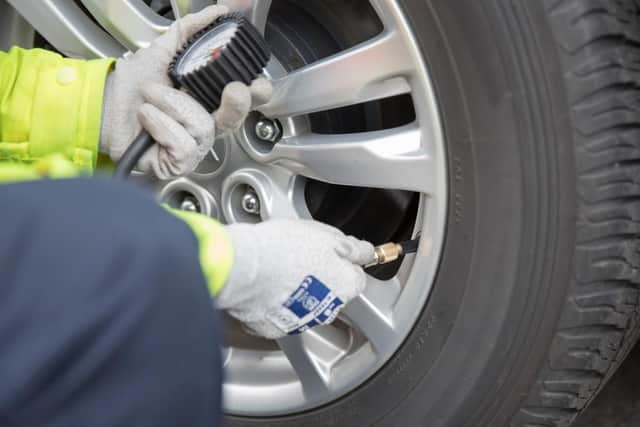Be prepared on the roads for high winds with Storm Agnes this week
and live on Freeview channel 276
Storm Agnes has been named by the Met Office as a deep area of low-pressure which will impact much of the UK on Wednesday and into Thursday.
National Highways advises that in high winds, there’s a particular risk to lorries, caravans and motorbikes, so drivers should slow down and avoid using exposed sections of road if possible.
Advertisement
Hide AdAdvertisement
Hide AdDrivers are being urged to have a safe T.R.I.P by using a new journey planning checklist. National Highways says following the checklist will help to prevent vehicle breakdowns and reduce the number of collisions caused by fatigue. The new T.R.I.P checklist is based on four key principles:


Top–up. Fuel, oil and screen wash.
Rest. Take a rest break every two hours.
Inspect. Check tyre pressure and tread.
Prepare. Have a plan for all weather conditions.
National Highways has produced online guidance on its website for handling different weather conditions when the weather gets colder in an effort to keep road users as safe as possible on its motorways and A-roads.
Steve Basterfield, National Network Manager at National Highways, said: “With the stormy weather being forecast, it is important to plan ahead for your journey, and if weather conditions become challenging, adjust your driving behaviour and take extra care.
“We have a section of our website dedicated to travelling amid storms, high winds and gales, and considerations for different types of vehicle, as part of our guide to travelling in severe weather. It’s also a good idea for people to check their vehicles, such as tyres, coolant and oil levels, before heading out to reduce the risk of breakdowns.”
Advertisement
Hide AdAdvertisement
Hide AdMet Office Chief Meteorologist Matthew Lehnert said: “Storm Agnes will approach southwest Ireland early on Wednesday and track northeast across Northern Ireland and Scotland before clearing on Thursday morning. Gusts of 45-55 mph are expected widely inland and 50-60 mph over hills and around coasts.
“The strongest winds are expected to affect Northern Ireland, southwest Scotland, west and northwest Wales, Cumbria and Lancashire where some places inland may see gusts of 60 mph and 65-75 mph over hills and around coasts. These are most likely during the second half of Wednesday afternoon and through the evening."
A Yellow Warning for wind has been issued by the Met Office for a large area of the UK, with a rain warning also issued for parts of Scotland. Warnings will continue to be reviewed in the coming days as the exact track and strength of Storm Agnes becomes clearer.
The Met Office says its wind warning highlights the chance of some damage to buildings from strong winds, as well as the possibility of power cuts for some. It says transport disruption is also likely, with some roads and bridges likely to close, and speed restrictions on some bridges.
Advertisement
Hide AdAdvertisement
Hide AdNational Highways uses roadside signs to warn you of possible high winds or side winds. These can be displayed on electronic or fixed roadside signs.
Some locations also have windsocks located on the roadside. These show you the direction and severity of the wind.
National Highways also monitor the network for debris and use specialist equipment to remove it as quickly as possible.